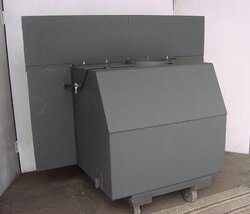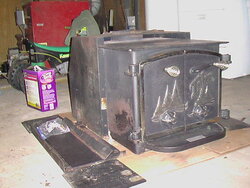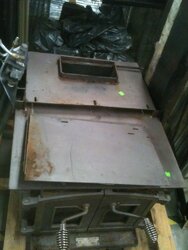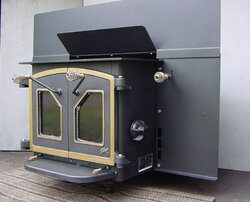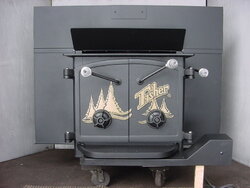Thankfully, a young man bought a house in my neighborhood tied up in bankruptcy and vacant for four years. They're making great progress and it's a relief.
We got to talking about wood stoves and he showed me his setup. The short story is that it's not safe to run in my opinion.
He had a sweep out with a camera and they discovered the liner IS NOT ATTACHED to the stove. Who would do that? Then it occurred to me that the facade (or whatever you call it) looks to be welded to the stove! I'm no mechanical genius, but I can't see any way to attach a liner with the stove pulled out. ;-)
Any thoughts on his unit? The logo is unfamiliar to me. This seems to be more of a replace than repair.
Not sure if this post should go in the "old stoves" forum. Possible replacement might make this a "new stove" topic.
Thanks,
Greg
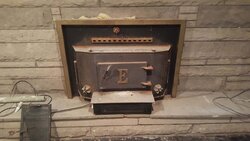
We got to talking about wood stoves and he showed me his setup. The short story is that it's not safe to run in my opinion.
He had a sweep out with a camera and they discovered the liner IS NOT ATTACHED to the stove. Who would do that? Then it occurred to me that the facade (or whatever you call it) looks to be welded to the stove! I'm no mechanical genius, but I can't see any way to attach a liner with the stove pulled out. ;-)
Any thoughts on his unit? The logo is unfamiliar to me. This seems to be more of a replace than repair.
Not sure if this post should go in the "old stoves" forum. Possible replacement might make this a "new stove" topic.
Thanks,
Greg



